Assless Trash Chaps
Inspiration:



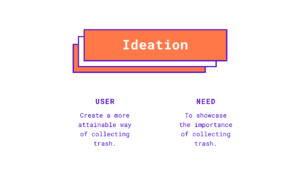
Ideation:


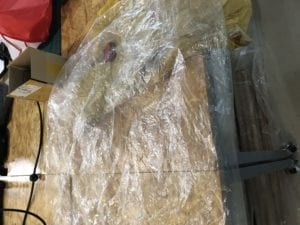
Assless Trash Chaps
Inspiration:




Ideation:



Workshop Experiment:
Last week we did an in-class workshop on heating plastic. The two options we used were the heating press machine and the heating iron. Vanelly and I tried out the iron and came to the realization that our Iron didn’t have any numbers to measure the temperature, so we just guessed (a lot). We noticed that the shriveling up means that it’s too hot, and so we attempted to adjust some buttons. Then we noticed it was too cold when there was no difference in the plastic and it didn’t stick together with the other piece of plastic. Also- it is good to note that we ironed it on a table and placed a piece of cloth underneath and used parchment paper in between the plastic so it wouldn’t make direct contact with the iron.
During the week I attended a sewing, vinyl cutter, and embroidery workshop that helped me gain more skills and understanding on how to make a wearable as well and guided my design in the direction I want it to go.

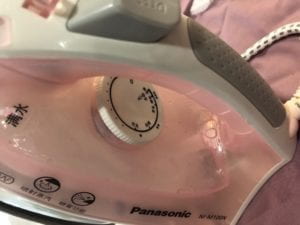


Midterm Wearable:
When traveling through Mongolia for national holiday this year, I climbed and hiked through national parks that were filled with trash. I was flabbergasted to see how trashed these sacred sites of the countryside had been invaded by pure garbage. It was more so sad that there was no care whatsoever and it seemed to just keep accumulating. I could not even focus on the view- which was a great big rock that is famous for being shaped like a turtle. I was fed up and began to pick up the wrappers and bottles that were laying around. I then found a huge bag that appeared to be for rice and I filled it to the top with all of the litter I picked up. A young Chinese couple who was also on vacation from Beijing walked over to me and asked me if I do this everywhere I go. I then realized that it has become more normal to see trash in national nature parks than to actually pick the trash up or clean up after yourself. The conversation was a good way to bring up conservation and to spread the idea of conservation. From this event, I have come up with a wearable made out of trash to pick up trash.
I realized that it would have been amazing to have a bigger trash bag or a place to store the trash that I had collected. So I want to create a pair of pants with two layers, very similarly to the inspo image below, that is for trash collecting. SO next time you are on the street and you see trash but don’t have a way of disposing it, you can stick it in your pants and properly recycle it when you get home!
Vanelly and I will be accomplishing this get up together!




The guest lecturer was such a treat. Not just because he gave me his vest right off of his bareback, but because he was genuinely very informed about the trash situation and has dedicated his time to talk to us about how he does it. I look up to people like him because trash collectors have a negative stigma, especially in the West, and even though you can profit from doing it a lot of dedication has to go into the process. It is a job that we take for granted and I have never really put much thought into it because it is something that has always been done for me. I reflected on several things that he said, primarily the fact that he has a good relationship with his neighbors as well as the people who he sells trash to. It is a whole ecosystem of exchanges and relationships that I have never thought of being important. He also cleared up a question that I was always unsure of which was: where do batteries and such go? Even though he has no idea, there is someone who picks those items up and disposes of them properly. 
For our next video, we were going to interview some trash collectors near the AB that Kenneth sees on a daily basis. Unfortunately, they were out because of the holiday but we are planning to schedule doing an interview towards the end of this week.
Our group decided to tackle the issue of sorting trash in one of the most congested areas of the school: the cafe. We really wanted to shed light on the fact that there is not much education on how materials are disposed of. It’s almost as if those bins with 34327509 different labels doesn’t make a difference. I caught myself making the same mistake over and over until I learned a few weeks ago about the consequences of my carelessness or even yet, ignorance. Maybe this video can help others, like myself, understand how to sort out trash for future occurrences.
Accumulation: The Material Politics of Plastic
-Parkesine: presented by Alexander Parkes in 1862
-Celluloid: manufactured by John Wesley and Isaiah Hyatt in 1870s
-Both Parkensine and Celluloid were promoted as alternatives to solid materials. Lightness and versatility. Celluloid was described as “Chameleon Material” used to make combs, buttons, collars, cuffs, and billiard balls.
-In Aerostatalian times, it was seen as Barbaric to own multifunctional instruments. It was preferred to use single-use.
-Success of plastics came about thanks to marketing which promoted them as materials of “protean adaptability”.
-The democratization of material goods began in the 1930s, “a plastic a day keeps the depression away”
-Engineers had to give up the traditional linear approach to innovation and convert to “materials thinking” which has played a crucial part in the emergence of new relationships with materials and matter in general.
-Materials thinking: a new method of design that takes into account all parameters simultaneously rather than sequentially
-Materials are no longer a prerequisite for the design of artifacts, and would no longer limit our possibilities of creation.
Outsmart Waste: Chapter 7 The Science of recycling
-During the Industrial Revolution, the need for metals was enormous, and metal recycling was in full force.
-It takes about 95 percent less energy to recycle metals, such as aluminum, than it does to produce virgin metal.
-Only about 5 percent of plastics in the US are being recycled.
-7 Categories of Plastics:
#1 (PET) Polyethylene terephthalate- clear in color, soda bottle, most recycled plastic in the world
#2 (HDPE) High-density polyethylene is used in everything from water pipes to milk jugs, second-most recycled plastic in the world
#3 (PVC) Polyvinyl chloride is used in plumbing pipes, blister packs, and vinyl records, not used in food packaging because it is toxic, negative impact on environment and health
#4 (PE-LD) Low-density polyethylene is in frozen food bags and squeezable bottles of ketchup and mustard
#5 (PP) Polypropylene is used in packaging for yogurt, margarine, and other disposable cups and cutlery, very limited recycling but is growing slowly
#6 (PS) Polystyrene is used in disposable razors, cd jewel cases, similar to #5
#7 (Other) Contact lenses to DVDs, no one really knows what it is
Our journey began in the 2nd-floor cafe. We looked around the trash cans and our search led us to find a huge black trash bag on wheels. We then ran into the room because we were so excited by what we had just witnessed. A lovely ayi was cleaning up and so we took the opportunity to ask her where the trash is going and she told us that it goes in B2. We scurried down the elevator in B2 and were astounded to find an empty parking garage. We actually walked quite a few ways to find only by hearing what sounded to be a trash machine? We weren’t sure so we walked closer and found the most beautifully assorted trash and waste bins. There was no smell whatsoever. Everything was meticulously placed in its spot and there was even a machine that appeared to be a plastic recycling machine. We asked the man who was there if he knew where the trash goes after this point in B2. He said that a truck comes to pick it up and it is history from there. So there you have it. NYU Shanghai has a very efficient way of getting rid of waste and so I do believe that incorporating a phase of plastic and recycling within the school it would be possible.






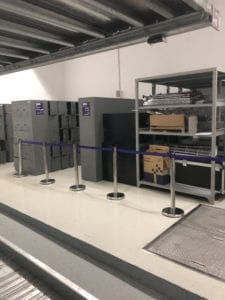




Shanghai’s Informal Waste Management Report
-Landfilling is Shanghai’s most common form of waste treatment
-Shanghai plans to become landfill-free by 2020
-Incinerators burn waste to turn a turbine and produce electricity
-Incinerators release toxins into the environment and harm people’s health
-Swapping Points: non-licensed areas on the street where informal individuals and recyclers gather to buy and sell material from other recyclers
-Small collection centers: these sites pay informal and opportunistic collectors by weight for the waste collected
-Large consolidation center: These centers are the last points in the collection chain before
transportation to processing centers
-Processing Centres: These are the endpoint in the material life with many
present in nearby provinces of Jiangsu and Zhejiang. This is the side of the informal sector that is the least transparent
and in many cases little is known about the quality of the
treatment.
Sustainability MIT Press
-Triple E’s of Business: Environment, Economy, Equity
-Building a community as a form of social capital
-Sustainable communities consist of collections of people who, when interacting, develop a sense of community, a sense of connectedness to others, and a sense of personal and collective well-being.
-Cities can achieve sustainable goals through design and public policy.
-Mainstream economics vs. sustainable economics
-Common pool resources: resources available to everyone
-“Tragedy of the Sources”: when the resources become depleted. EX: overfishing in the Atlantic
-The problem starts when a cattle ranchers put as many cows on grazing areas as they want, but over time they want to earn more profit so they keep adding more cattle to the area and the plant life slowly declines due to the overpopulation of inhabitants on the graze.
Agatha: Trash Installation in the Cafe
The thought of creating an art piece out of trash was daunting. I had no idea where to begin because I was scared I couldn’t shape the materials to my particular liking. My group and I decided that we had enough bubble wrap to make a cloud, so there begins our project with a cloud named Agatha. After wrapping up styrofoam and bubble wrap into a cloud formation, we began to hang trash bottles on cords of plastic, bags, and we even used an old headphone set. This represented acid rain that is contaminated by our landfills that leak into the oceans and begin the precipitation, evaporation, and condensation cycle. We thought it was important to use commonly known brands that we see every day to connect with our audience and relate a more meaningful message. We then did a runoff land and water part that goes directly under Agatha (the cloud) which expresses the rain and trash that runs off from landfills and into the ocean. Agatha also has a set of eyes and melancholy eyebrows that denotes how sad she is. I would have liked to see her hung up in the cafe to give the installation the full effect but once we sat her down in a chair it was fine. Just something we need to plan further next time.

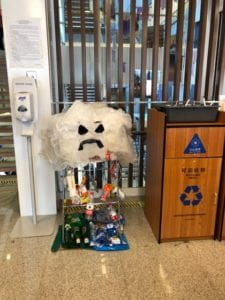

“The Concepts of Sustainability” MIT Press & “Accumulation: The Material Politics of Plastic”
-The US has begun to enter a “third epoch” or period of environmental concern.
-Introducing sustainability in relation to an American lifestyle
-Sustainability: economic development activity that meets the needs of the present without compromising the ability of future generations to meet their own needs.
-The basic premise of sustainability is that Earth’s resources cannot be used, depleted, and damaged indefinitely.
-The idea could be traced back to Thomas Malthus because at some point humans will run out of resources, especially if the population keeps growing
-Brundtland Commission of 1987 described sustainability as having 3 co-equal parts or elements, all of which start with the letter e: environment, economy, equity.
-Sustainability must simultaneously protect the environment, preserve economic growth and development, and promote equity.
-Particular emphasis on ecology and economics
-Sustainable biological resource use: focuses on the maximum sustainable yield from natural systems, such as forests and fisheries.
– Sustainable Agriculture: ensures that farming remains productive during and after major disturbances.
-Carrying Capacity: the ability of an area of land to support human populations
-Achieving sustainability requires some types of socio-political characteristics
-Sustainable Energy: producing electricity and powering machinery through means other than burning fossil fuels
-Sustainable Society and Sustainable Economy: a broad array of efforts to maintain social conditions and economic and human well-being
-Does higher economic growth really translate into better quality of life?
-Sustainable Development: the relationship between economic growth and environmental protection
-Ecological Carrying Capacity (strain of thought): suggests that an ecosystem has a finite capacity to sustain life
-The Resource/Environment (strain of thought): the depletion of natural resources as the primary challenge of sustainability
-The Biosphere (strain of thought): based on the notion that human activity has the ability to affect the health of the entire planet
-The Critique of Technology (strain): technology and technological innovation have played in promoting rather than avoiding degradation
– The No-growth Slow-growth (strain): a global perspective that there are limits to the Earth’s carrying capacity
-Ecodevelopment (strain): the focus on the need to reconcile social, economic, and political objectives with the realities of natural resources and the environment
-Shifting global thought to think topologically rather than the logic of inexorable effects
-PET bottles are single-use bottles
Guest Speaker Discussion:
I found the guest speaker discussion to be highly stimulating and informative. Since his work is centered in Shanghai it is much easier to envision the current situation that we are confronted with around us. It felt like he was offering insider knowledge and it made the discussion even more dynamic. It also gave me somewhat of a hopeful outlook on the future and the possibilities of human technological development regarding sustainability. Even though there is a lot of unanswered questions, we are setting up the discussion to bring attention to the issue. I wanted to hear more about his findings and research. The part I found most interesting was when he talked about how he followed locals who gathered trash to certain places and the efficiency of their role as unofficial trash picker-uppers.
I thought this film had a comical spin to a very serious topic which made it very easy to understand and digest. Jeb is your typical white American male living a mundane life with his expecting wife in Colorado. He then chooses to make a radical approach in one aspect of his life- pertaining to building sustainable habits. I think the use of this ‘Jeb’ character makes for a palpable and relatable story. Therefore, making it easier for the viewer to place him/herself into Jeb’s shoes and adjust their life accordingly. Throughout the plot, I realized how minimal the choices were and how impactful they are. I think today most people are aware of not using plastic bottles, bringing your own bags to the grocery store, and simple conservation tasks. But I often catch myself falling right back into these traps and I end up buying a plastic water bottle or accept a plastic bag from the grocery store. I would say the next step in the process of eliminating waste and minimizing my carbon footprint is to hold myself accountable.
I also really enjoyed how by the end of the film Jeb’s wife was giving birth and it depicted the life cycle in parallel with the product life cycle.
Nat Geo: Plastic Recycling is Broken Heres How to Fix It
It was not until the last few months that I became aware of the global phenomenon that is trash dispensing. I was shocked to find out that developed countries pack up all of their recycled trash and load it up to a cargo boat just to dispense it in some third world developing southeast Asian country. Not only does this create an unbalanced amount of waste, but it’s at the expense of people who are forced to live in harsh conditions prior to being invaded by foreign trash. I also had no idea that China was the world’s number one trash importer. What I am confused about is whether or not they purchase it or they receive money for it since the transaction would be that of commensalism in a symbiotic relationship.
Here are some key points I found interesting:
“single-stream recycling”- co-mingles paper, metal, glass, and plastic together. This recycled material is considered to be less pure so, in turn, less valuable. More quantity but less quality.
The consideration of revamping the product design cycle to start thinking about the end of the products life cycle
Vice video: China stopped taking a long list of garbage and it’s causing chaos
This short clip from Vice gave me a glimpse of what an average American recycling plant faces every day and how dependent they/we are on China. And now that China has regulated their waste intake there is no backup plan to ensure that recycled trash is being properly disposed of. This is very concerning and the fact that no one is talking about it and it is being pushed aside to worry about later is utterly disgusting. I see the issue from a design perspective- since that is the way my mind works- and action should be taken on redesigning a solution to not be dependent on other countries and also encourage individuals to take the step at home to recycle their own waste.
Some key points I took away:
-China has regulated the recycled goods market and thus has disrupted the whole entire cycle of recycling worldwide.
-Certain US states such as Massachusetts, are starting to give companies waivers to throw out recyclables.